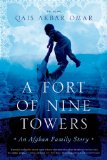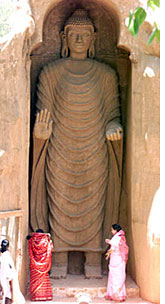Summary | Excerpt | Reviews | Beyond the Book | Read-Alikes | Genres & Themes | Author Bio

Critics' Opinion:
Readers' Opinion:
First Published:
Apr 2013, 416 pages
Paperback:
Apr 2014, 416 pages
 Book Reviewed by:
Book Reviewed by:
Kim Kovacs
Buy This Book
This article relates to A Fort of Nine Towers
Westerners often hear news reports of groups known as the Mujahideen, the Taliban, and Al-Qaeda. It can be easy to confuse or merge them in one's thinking, but they are of course separate organizations with differing histories, goals and characteristics.
The Mujahideen
The Mujahideen (singular mujahid) comes from the word jihad, which means, "struggle." First referenced in the Quran, a mujahid is a Muslim who struggles in the path of Allah. Over time this has taken on the connotation of being one who proclaims himself a warrior for the faith, or someone who is a freedom fighter struggling to liberate his land from non-Muslim influence, sometimes by violent means. The term is currently used rather freely, often to describe any Muslim group engaged in hostilities with non-Muslims or with secularized Muslim regimes.
With respect to Afghanistan in particular, Mujahideen was first used by the British to describe a group of individuals in the Afghan high country who fought against British control starting in 1829. The term didn't become common, though, until the late 1970s, referring at that time to those who rebelled against the pro-Soviet Democratic Republic of Afghanistan (DRA). Financed by the CIA during the Carter and Reagan administrations, the Mujahideen were credited with making the war too expensive for the Soviets, forcing their withdrawal from Afghanistan in 1989. After the Soviets' departure, the fall of the Soviet-backed Afghani government led to Mujahideen factions fighting against each other for control of Afghanistan in the resulting civil war.
The Taliban
The decades of war in Afghanistan created many orphans, many of whom ended up in refugee camps in Pakistan. These children were educated in conservative Pakistani religious madrassas (schools). The original Taliban forces were formed primarily from these students ("Taliban" comes from the word talib, which means "student"). They were organized into a fighting force by Mullah Mohammed Omar, the group's de facto leader (who, along with about 90,000 Afghans, had been trained by Pakistan's intelligence agency in the 1980s). After the fall of the Soviet backed regime in 1992 there was a short-lived power sharing agreement but much of the country was lawless. In the spring of 1994, Mullah Omar formed the Taliban with less than 50 former madrassa students. Within months the force had grown to over 15,000 as more students arrived from Pakistan. The Taliban attacked the Mujahideen warlords for control of Afghanistan with the stated goals of restoring peace, disarming the population, and enforcing Sharia law.
 Since they ended the hostilities that were costing many civilian lives, the Taliban were very popular with the people at first. Their strict application of Sharia law eventually alienated them from the population and caused increased economic hardship, and their near-total exclusion of women from public life resulted in a crisis in education and healthcare. In addition, their tolerance of Islamic militants, their implementation of harsh criminal punishments, and their seemingly arbitrary arrests, incarceration and torture of Afghani citizens earned them the disapprobation of most of the world's governments. One of their many acts of notoriety was the destruction of two sixth-century Buddha statues carved out of sandstone cliffs in Bamiyan in central Afghanistan. These statues, which stood 180 and 120 feet tall respectively, are being painstakingly restored under the auspices of the United Nations Educational, Scientific and Cultural Organization, along with the International Council on Monuments and Sites.
Since they ended the hostilities that were costing many civilian lives, the Taliban were very popular with the people at first. Their strict application of Sharia law eventually alienated them from the population and caused increased economic hardship, and their near-total exclusion of women from public life resulted in a crisis in education and healthcare. In addition, their tolerance of Islamic militants, their implementation of harsh criminal punishments, and their seemingly arbitrary arrests, incarceration and torture of Afghani citizens earned them the disapprobation of most of the world's governments. One of their many acts of notoriety was the destruction of two sixth-century Buddha statues carved out of sandstone cliffs in Bamiyan in central Afghanistan. These statues, which stood 180 and 120 feet tall respectively, are being painstakingly restored under the auspices of the United Nations Educational, Scientific and Cultural Organization, along with the International Council on Monuments and Sites.
The Taliban's refusal to extradite Osama bin Laden after the al-Qaeda attacks on the United States in 2001 prompted a declaration of war against them by a U.S.-led coalition. The "War on Terror" subsequently drove the Taliban from power. They still remain part of the insurgency, however, continuing attacks against coalition troops and government forces at least as late as 2013.
Al-Qaeda
Al-Qaeda ("The Base") is an international terrorist organization created by the exiled Saudi militant Osama bin Laden in 1988. It recruits, trains and finances Muslim militants to use any means possible, including violence, to overthrow non-Muslim governments. Their tactics include assassinations, kidnappings, and bombings (including suicide attacks).
The group was originally established to help expel the Soviet troops from Afghanistan, but after the Soviet withdrawal they declared a holy war – jihad – against all non-Muslims to establish the rule of Allah on Earth and to cleanse Islam of depravity. Based in Sudan from 1992-1996, the Al-Qaeda leadership found a haven in Afghanistan under Taliban rule after the the Mujahideen warlords were ousted. From there, they were able to plan terrorist attacks against Western countries including the events of 9/11 in the United States.
Individual Al-Qaeda leaders have been targeted by coalition forces as part of the "War on Terror" – Osama bin Laden was killed by U.S. forces in 2011. While many in the organization's leadership have been eliminated, the group's decentralized operations have allowed it to continue its attacks on western targets.
Picture from Slate.com
Filed under Places, Cultures & Identities
![]() This "beyond the book article" relates to A Fort of Nine Towers. It originally ran in August 2013 and has been updated for the
April 2014 paperback edition.
Go to magazine.
This "beyond the book article" relates to A Fort of Nine Towers. It originally ran in August 2013 and has been updated for the
April 2014 paperback edition.
Go to magazine.





The House on Biscayne Bay
by Chanel Cleeton
As death stalks a gothic mansion in Miami, the lives of two women intertwine as the past and present collide.

The Flower Sisters
by Michelle Collins Anderson
From the new Fannie Flagg of the Ozarks, a richly-woven story of family, forgiveness, and reinvention.

The Funeral Cryer by Wenyan Lu
Debut novelist Wenyan Lu brings us this witty yet profound story about one woman's midlife reawakening in contemporary rural China.
Your guide toexceptional books
BookBrowse seeks out and recommends the best in contemporary fiction and nonfiction—books that not only engage and entertain but also deepen our understanding of ourselves and the world around us.